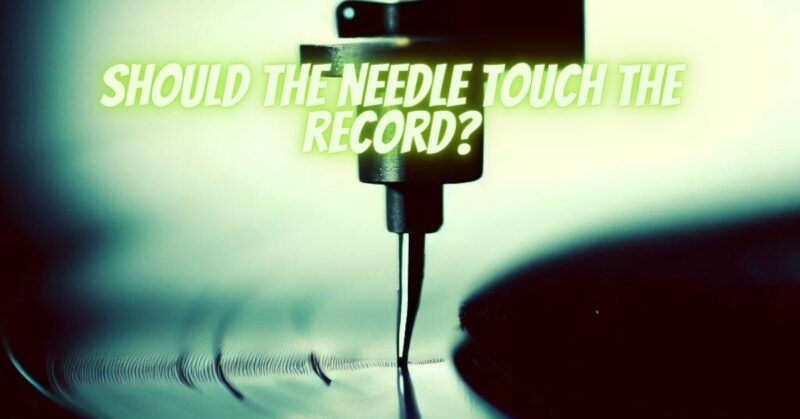Vinyl records have a timeless charm that appeals to audiophiles and music enthusiasts alike. Playing a vinyl record involves delicately placing the stylus (needle) onto the spinning disc to bring the music to life. However, a common question arises: should the needle touch the record’s surface? In this article, we’ll delve into the debate surrounding this issue and provide insights into the best practices for handling your vinyl records.
Understanding the Mechanics: To address whether the needle should touch the record, it’s essential to grasp the fundamental mechanics of a vinyl playback system:
1. Stylus and Grooves: The stylus, a tiny diamond or other hard material, is attached to the tonearm. It rests within the grooves of the vinyl record. As the record spins, the stylus follows the grooves, translating the physical vibrations into electrical signals that produce sound.
2. Tracking Force: The tracking force, measured in grams, is the pressure applied by the stylus to the record’s grooves. Proper tracking force is vital for accurate sound reproduction and preventing damage to the record and stylus.
To Touch or Not to Touch:
1. Proper Tracking Force: The needle (stylus) should indeed touch the record’s surface, but with the right amount of pressure. This pressure is determined by the tracking force, which is usually specified by the turntable manufacturer or the cartridge manufacturer. Using too much tracking force can damage the record and stylus, while too little can result in poor sound quality and skipping.
2. Adjusting Tracking Force: To ensure the needle touches the record correctly, you should calibrate the tracking force according to the manufacturer’s recommendations. This involves adjusting the counterweight on the tonearm to achieve the desired force. Modern turntables often feature built-in mechanisms for tracking force adjustment.
3. Vertical Tracking Angle (VTA): Another consideration is the vertical tracking angle—the angle at which the stylus meets the record. Proper VTA ensures accurate tracking and minimizes distortion. Some turntables allow for VTA adjustment, so consult your turntable’s manual for guidance.
Benefits of Proper Needle Contact:
- Optimal Sound Quality: Proper needle contact ensures accurate tracking and sound reproduction, allowing you to experience the intended audio quality of your vinyl records.
- Reduced Wear: Adequate tracking force prevents excessive wear on both the stylus and the record’s grooves, extending the lifespan of both components.
- Minimized Distortion: Correct needle contact minimizes distortion and playback issues, preserving the integrity of the recorded music.
The question of whether the needle should touch the record is answered with a resounding “yes,” but it’s crucial to strike the right balance. Proper tracking force and, if applicable, vertical tracking angle adjustment are essential for both sound quality and the longevity of your vinyl collection. By following the manufacturer’s recommendations and paying attention to the setup of your turntable, you can ensure that the needle delicately dances across the grooves, bringing the magic of vinyl music to your ears with precision and finesse.


